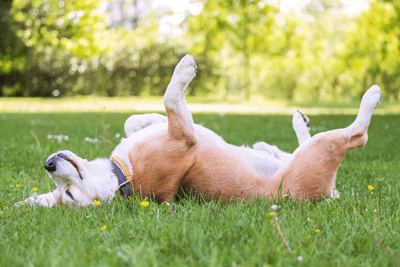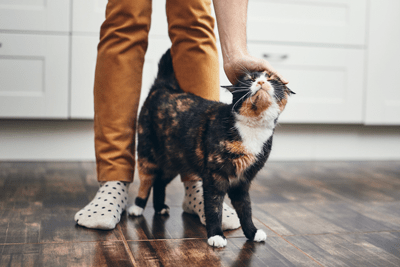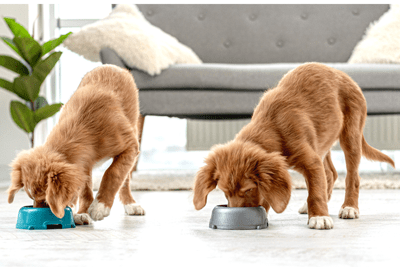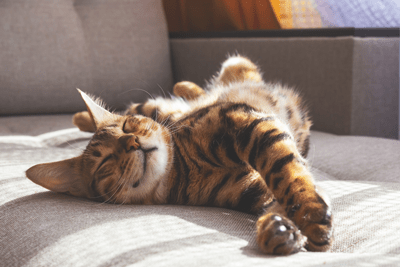On the surface, your pet’s needs seem simple—food, water, shelter, and exercise. But continuing research is revealing that our dogs and cats lead emotionally complex lives, and one emotion in particular—happiness—is more than a purr or a wagging tail. Your pet’s happiness is a major contributor to their overall health and, perhaps, their longevity.
Since you can’t ask your pet to describe how they feel, how can you tell if they’re happy? And what if they’re unhappy? UrgentVet recommends that you observe your pet for the following characteristics and consult your general practice veterinarian if your pet’s results are less than blissful.
Say what? Happy pets express themselves through body language
Dogs and cats use body language to interact and communicate with their own species. If you watch closely, you’ll see that they’re also trying to communicate with us, but because humans are predominantly verbal, we often misinterpret or overlook our pets’ gestures, posture, and behaviors.
Fortunately, pet contentment is easily identified. Happy dogs and cats appear relaxed and loose in their movements and carry a soft expression. Each species also displays specific characteristics, which include:
- Dogs — Happy dogs display relaxed or alert ears, a soft half-lidded gaze, wiggling or C-shaped full body movements, and a slightly open mouth. Happy dogs may gently pant, vocalize, or perform playful motions (e.g., bouncing, zooming, or play bowing). A happy dog often wags their tail, although the speed depends on the breed and the tail length—long tails will wag gently and rhythmically, while short or docked tails often wag fast and may involve the dog’s entire hind end.
- Cats — Contented cats carry their tail raised with a slight curve in the tip, their ears are forward, their gaze is soft, and they may squint or blink slowly. If your cat’s tail is “S” shaped and their pupils are wide, they may be inviting you to play. Happy cats express their affection through physical contact, including rubbing, head-butting, and kneading—actions often accompanied by purring.
Attention, please! Happy pets are active and engaged
Happy dogs and cats are interested in their surroundings, including their environment and activities. Pets should actively seek social interactions, such as soliciting petting or play with their owners, or simply want to be in close proximity to their “human family.” Happy pets are mobile and enjoy physical activity, and although the intensity and duration will change with age, contented pets enjoy structured and self-initiated physical activity every day.
In short, happy pets are active and present family members and do not hide or remove themselves, which is why self-isolation is a common red flag for health problems and pain.
C’mon, get healthy! Healthy pets are happy pets
Pain, illness, and stress negatively impact your pet’s quality of life—so happiness and health are strongly correlated. In addition to routine veterinary wellness exams, you should monitor your pet’s basic health signs. Because each pet is an individual, knowing your pet’s “normal” so you can note any changes is essential. Health parameters include:
- Appetite
- Thirst
- Urination
- Defecation
- Mobility
- Energy level
Fluctuations or changes in any of these categories can indicate pain, illness, or stress, and will negatively impact your pet’s emotional wellbeing. Schedule an appointment with your regular veterinarian if you notice any change in your pet’s health parameters.
Sweet dreams! Happy pets sleep well
Your pet’s sleeping habits, including quality and quantity, impact their health and behavior. Healthy adult dogs should sleep 8 to 13.5 hours per day, while puppies and seniors sleep more, especially during the day. Most cats sleep 12 to 18 hours a day, while 40% sleep 18 hours or more. Like humans, pets need sleep, which boosts the immune system and allows the body to rest, recharge, and recover from the day’s activities, for their survival. Although pet sleep studies are few, one shelter dog study found that dogs who slept more during the day were more relaxed and appeared happier.
Unexplainable changes in your pet’s sleep or wake cycles can signal an underlying health condition, so schedule an appointment with your regular veterinarian if your pet’s sleep patterns have altered.
Good pet! Happy pets are well-behaved
Generally speaking, happy pets are better behaved, which can be attributed to a balance of appropriate physical activity and reduced stress—a common cause for anxious and frustration-based behaviors, such as digging, chewing, house soiling, scratching, excessive grooming, barking, and reactivity. Also, happy pets are easier to live with and better company, so are more likely to receive regular socialization and training opportunities, and experience positive interactions with their environment, other people, and pets. This exposure boosts their confidence and helps them become or remain adaptable to changes in their environment, which in turn prevents stress.
While some misbehavior is natural for puppies and kittens as they learn about their world, any abrupt behavior change in an adult pet may indicate a physical or emotional health problem. Visit your veterinarian to rule out medical causes before seeking a training-based solution.
Your pet’s happiness is more than a mood—it’s an essential part of their total health and wellbeing. Paying close attention to your dog or cat’s emotional state can help you meet their needs and identify small shifts before they become big problems. Of course, life isn’t always so simple—for those unexpected unhappy moments when your pet is sick, injured, or simply not right, contact UrgentVet for expert after-hours care—because your pet can’t wait to feel better.
Visit our website to find an UrgentVet location near you or check in online.






